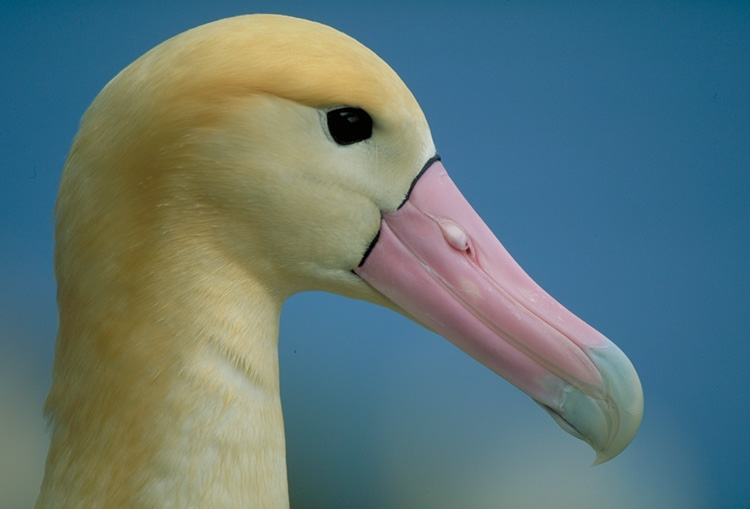Masaki Eda (Graduate School of Agricultural and Life Sciences, University of Tokyo) and colleagues, writing in the journal Conservation Genetics this year, have looked at ancient DNA in Short-tailed Albatrosses Phoebastria albatrus, suggesting that in the past there were two distinct populations.
The paper's abstract follows:
"The history of population structure is a key to effective wildlife management and conservation. However, inferring the history of population structure using present genetic structures is problematic when the method is applied to species that have experienced severe population bottlenecks. Ancient DNA analysis seemed to be a promising, direct method for inferring ancient population structures. However, the usual methods for inferring modern population structure, i.e. the phylogeographic approach using mitochondrial DNA and the Bayesian approach using microsatellite DNA, are often unsuitable for ancient samples. In this study, we combined ancient DNA obtained from zooarchaeological bones with carbon/nitrogen stable isotope ratios and morphological variations to infer ancient population structure of the short-tailed albatross Phoebastria albatrus. The results showed that the bird existed in two populations, between which the genetic distance was greater than that of distinct sister albatross species, although no subspecies of P. albatrus have been proposed. Our results suggest that the birds at the present two breeding regions (Torishima in the Izu Islands and two islets of the Senkaku Islands) are descended from these two ancient populations, and that reevaluation of the status and conservation strategy for the species is required. Our results also indicate that lineage breeding on the Senkaku Islands has drastically reduced genetic diversity, while that on Torishima has not. The approach proposed in this study would be useful for inferring ancient population structure, using samples of highly mobile animals and/or samples from archaeological sites, and the reconstructed ancient population structure would be useful for conservation and management recommendations."

Short-tailed Albatross. Photograph by Hiroshi Hasegawa
Reference:
Eda, M., Koike, H., Kuro-o, M., Mihara, S., Hasegawa, H. & Higuchu, H. 2012. Inferring the ancient population structure of the vulnerable albatross Phoebastria albatrus, combining ancient DNA, stable isotope, and morphometric analyses of archaeological samples. Conservation Genetics 13: 143-151.
John Cooper, ACAP Information Officer, 31 March 2012

 English
English  Français
Français  Español
Español